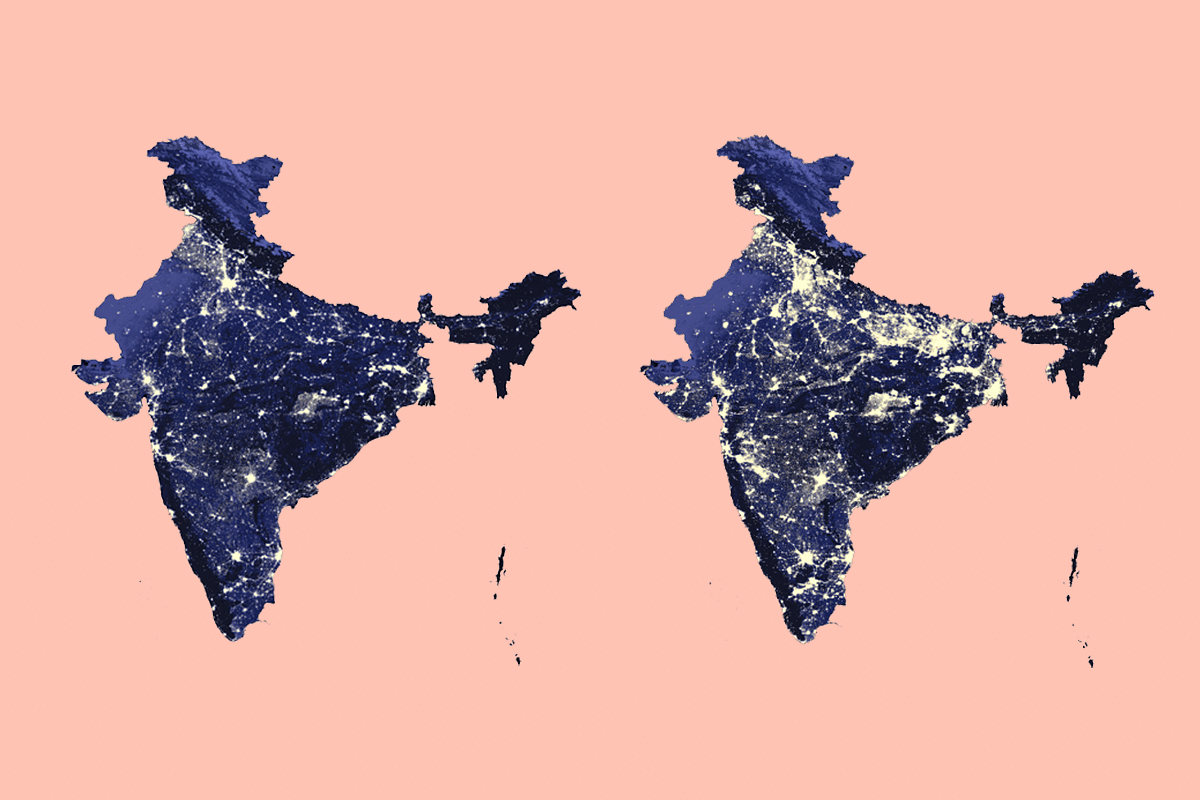News Brief
2012 Vs 2022: What Night-Time Luminosity Maps In India's 2022 Economic Survey Show

India night time luminosity in 2012 and 2022.
Earlier today, the Economic Survey for 2021-22, authored by Principal Economic Advisor Sanjeev Sanyal, was tabled in the Lok Sabha.
Among other maps, the survey has carried two night-time luminosity maps of India of 2012 and 2021. Using satellite imagery, the maps show that the electricity supply and economic activity have significantly expanded since 2012. The expansion of illuminated centres also suggests that urban areas have expanded over in the last ten years.
"Night-time luminosity provides an interesting representation of the expansion of electricity supply, the geographical distribution of population and economic activity, urban expansion as well as growth of ribbon developments between urban hubs," the Economic Survey says.
Under schemes like Deendayal Upadhyaya Gram Jyoti Yojana and Saubhagya, access to electricity has seen a significant expansion. In April 2018, Prime Minister Narendra Modi had announced that "every single village" of the country now has access to electricity.
Earlier, a night-time map released by television channel National Geographic, based on satellite imagery released by the National Aeronautics and Space Administration, had also revealed expansion in access to electricity and economic activity. The map, comparing satellite data from 2012 and 2016, revealed where the planet has dimmed or brightened.
The maps showed that Indian cities had grown bigger in the last few years, CNN said in its report. The images show large swaths of northern India, that were relatively dark in the images released by the agency in 2012 , lit up as new urban areas.
Interestingly, this was in line with the data released by Oxford Economics in its Global City Forecast. According to the forecast, one of the most widely accepted in the world, 14 of the 20 fastest-growing cities in the 2015-19 period were in India.
Introducing ElectionsHQ + 50 Ground Reports Project
The 2024 elections might seem easy to guess, but there are some important questions that shouldn't be missed.
Do freebies still sway voters? Do people prioritise infrastructure when voting? How will Punjab vote?
The answers to these questions provide great insights into where we, as a country, are headed in the years to come.
Swarajya is starting a project with an aim to do 50 solid ground stories and a smart commentary service on WhatsApp, a one-of-a-kind. We'd love your support during this election season.
Click below to contribute.
Latest